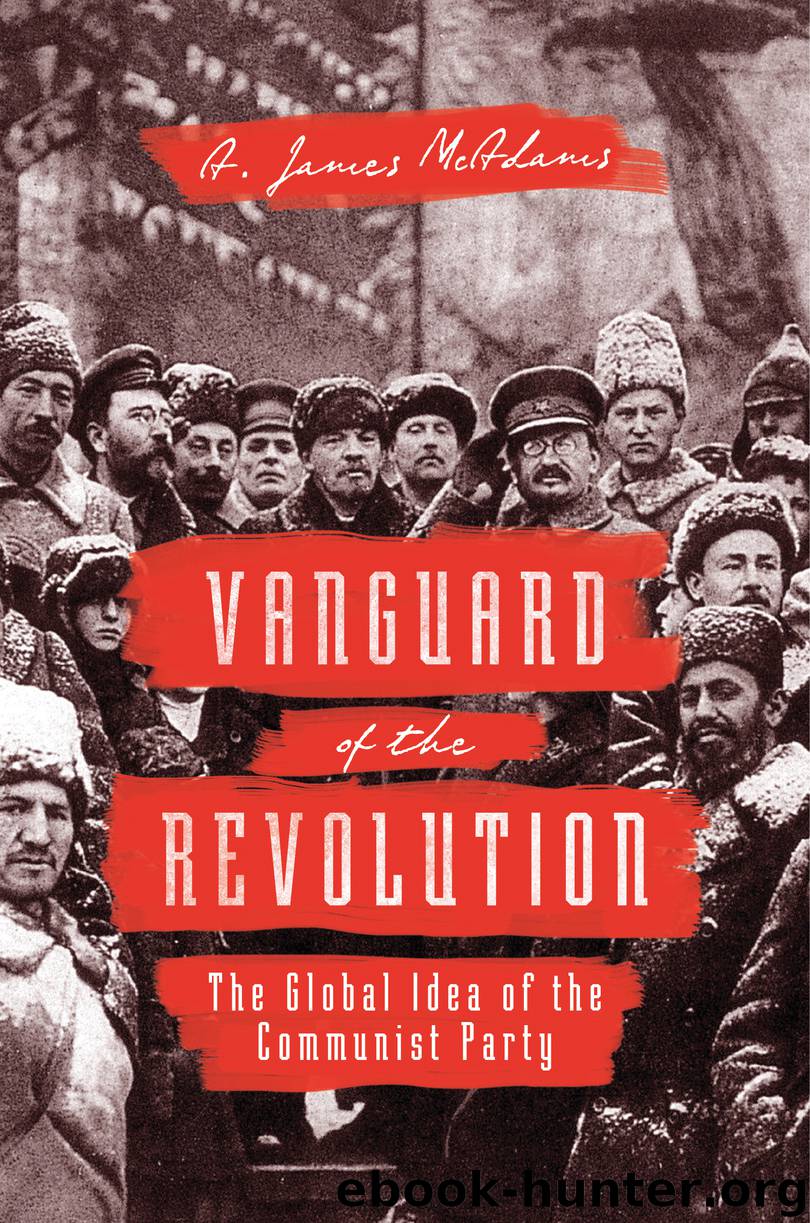Vanguard of the Revolution by McAdams A. James;

Author:McAdams, A. James;
Language: eng
Format: epub
Publisher: Princeton University Press
THE PERSISTENCE OF STALINISM IN EASTERN EUROPE
To outside observers in 1953, a break with Stalinism must have seemed even more necessary in Eastern Europe than in the Soviet Union. A majority of the People’s Democracies, as well as the German Democratic Republic (GDR), literally owed their existence to the USSR. Yet precisely this relationship made their leaders’ claims to authority problematic. Thus, rather than embracing meaningful change, these “little Stalins” relied upon two means to retain power: dogged opposition to any political rivals, especially reformists, and, when necessary, the recourse to brute force.
Stalin’s death instantly exposed the fragility of these regimes. In early May 1953, tobacco workers went on strike in Bulgaria’s second-largest city, Plovdiv, in opposition to draconian work quotas. One month later, the Czechoslovak government declared martial law in Plzeň when thousands of workers protested a planned currency reform that would have destroyed their savings. The prospect of further instability was most vividly confirmed by successive crises in the GDR, Poland, and Hungary. In all three countries, their Stalinist leaders—Walter Ulbricht, Bolesław Bierut, and Mátyás Rákosi, respectively—were threatened by both popular discontent and discord within their party’s ranks. But in these cases as well, they drew upon their internal supporters and Moscow’s determination to satisfy its security interests to retain power.
The extent of this crisis of legitimacy was demonstrated by the nearly total breakdown of political authority in the GDR in 1953. As a result of Ulbricht’s decision to accelerate the transition to socialism, East Germany was beset by widespread food shortages, the collapse of the transportation system, and labor unrest. On June 16, three months after Stalin’s death, construction workers in East Berlin walked off their jobs in protest against the regime’s refusal to rescind its high production quotas. On the following day, June 17, the city exploded. As strikes and demonstrations spread throughout the GDR, only the intervention of Soviet troops and the deaths of hundreds of citizens were enough to keep the East German government in power.
Looking back at these events, one might wonder whether this convulsion would have been prevented if Ulbricht’s ambitions had been checked. One of the most intriguing dimensions of the crisis is that key figures in the Socialist Unity Party’s (SED) highest echelons recognized the need to move beyond the policies of the Stalin era. Several weeks before Malenkov announced the New Course, a majority of the members of the Politburo of the SED, led by the minister for state security, Wilhelm Zaisser, reached a consensus about the desirability of a more conciliatory approach to the population. They endorsed the return of confiscated property to its original owners, a halt to further collectivization, and the redirection of investment priorities toward private consumption. At the Central Committee’s meeting on May 13–14, they successfully secured Ulbricht’s agreement to modest reforms, but with the fatal concession that they increase the controversial work norms.
Nevertheless, in the wake of the workers’ revolt, Ulbricht’s opponents seemed to win the opportunity to turn against him. All but two members of the Politburo were in favor of removing the SED chief from office.
Download
This site does not store any files on its server. We only index and link to content provided by other sites. Please contact the content providers to delete copyright contents if any and email us, we'll remove relevant links or contents immediately.
| Arms Control | Diplomacy |
| Security | Trades & Tariffs |
| Treaties | African |
| Asian | Australian & Oceanian |
| Canadian | Caribbean & Latin American |
| European | Middle Eastern |
| Russian & Former Soviet Union |
The Secret History by Donna Tartt(18084)
The Social Justice Warrior Handbook by Lisa De Pasquale(11941)
Thirteen Reasons Why by Jay Asher(8416)
This Is How You Lose Her by Junot Diaz(6411)
Weapons of Math Destruction by Cathy O'Neil(5801)
Zero to One by Peter Thiel(5463)
Beartown by Fredrik Backman(5306)
The Myth of the Strong Leader by Archie Brown(5217)
The Fire Next Time by James Baldwin(4998)
How Democracies Die by Steven Levitsky & Daniel Ziblatt(4940)
Promise Me, Dad by Joe Biden(4899)
Stone's Rules by Roger Stone(4833)
100 Deadly Skills by Clint Emerson(4663)
Rise and Kill First by Ronen Bergman(4537)
A Higher Loyalty: Truth, Lies, and Leadership by James Comey(4532)
The David Icke Guide to the Global Conspiracy (and how to end it) by David Icke(4361)
Secrecy World by Jake Bernstein(4355)
The Farm by Tom Rob Smith(4306)
The Doomsday Machine by Daniel Ellsberg(4233)
